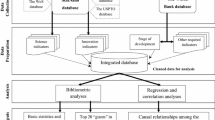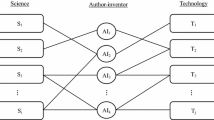Abstract
Nanoscale science and engineering (NSE) and related areas have seen rapid growth in recent years. The speed and scope of development in the field have made it essential for researchers to be informed on the progress across different laboratories, companies, industries and countries. In this project, we experimented with several analysis and visualization techniques on NSE-related United States patent documents to support various knowledge tasks. This paper presents results on the basic analysis of nanotechnology patents between 1976 and 2002, content map analysis and citation network analysis. The data have been obtained on individual countries, institutions and technology fields. The top 10 countries with the largest number of nanotechnology patents are the United States, Japan, France, the United Kingdom, Taiwan, Korea, the Netherlands, Switzerland, Italy and Australia. The fastest growth in the last 5 years has been in chemical and pharmaceutical fields, followed by semiconductor devices. The results demonstrate potential of information-based discovery and visualization technologies to capture knowledge regarding nanotechnology performance, transfer of knowledge and trends of development through analyzing the patent documents.
Similar content being viewed by others
References
Aureka, 2002. Aureka Online Services, Aureka Systems, available at: http://www.aurigin.com/aureka online.html
Chen C. & R.J. Paul, 2001. Visualizing a knowledge domain's intellectual structure. IEEE Computer 34(3), 65–71.
Chen H., A.L. Houston, R.R. Sewell & B.R. Schatz, 1998. Internet browsing and searching: User evaluation of category map and concept space techniques. J. Am. Soc. Inform. Sci. 49(7), 582–603.
Chen H., C. Schuffels & R. Orwig, 1996. Internet categorization and search: A machine learning approach. J. Visual Comm. Image Represent. (Special Issue on Digital Libraries) 7(1), 88–102.
Gansner E. & S. North, 2000. An open graph visualization system and its applications to software engineering. Software - Practice and Experience 30(11), 1203–1233.
Garfield E., 1995. Citation indexes for science: A new dimension in documentation through association of ideas. Science 122, 108–111.
Garfield E., 1979. Citation Indexing: Its Theory and Application in Science, Technology and Humanities. John Wiley, New York.
Karki M.M., 1997. Patent citation analysis: A policy analysis tool, World Patent Inform. 19, 269–272.
Lin C., H. Chen & J.F. Nunamaker, 2000. Verifying the proximity hypothesis for self-organizing maps. J. Manage. Inform. Syst. 16(3), 57–70.
Mackinlay J.D., R. Rao & S.K. Card, 1999. An organic user interface for searching citation links, In: Proceedings of the CHI'95, ACM Conference on Human Factors in Computing Systems, pp. 67–73.
Narin F., 2000. Tech-Line Background Paper, CHI Research, Inc., available at: http://www.chiresearch.com/techline/tlbp.pdf
Ong T.-H., H. Chen, W.-K. Sung & B. Zhu, 2003. Newsmap: A knowledge map for online news. Decision Support Systems, Special Issue on Collaborative Work and Knowledge Management in Electronic Business (in press).
Oppenheim C., 2000. Do patent citations count? In: Cromin, B. and Atkins, H.B. eds. The Web of Knowledge. Information Today, Inc., Medford.
Roco M.C., R.S. Williams & P. Alivisatos, eds., 2000. Nanotechnology Research Directions. Kluwer Academic Publishers, Boston.
Roco M.C., 2001. International strategy for nanotechnology research and development. J. Nanoparticle Res. 3(5-6), 353–360.
Schmoch U., 1993. Tracing the knowledge transfer from science to technology as reflected in patent indicators. Scientometrics 26, 193–211.
Schwartz E.I., 2003. Patents go global. Technol. Rev. May, 55–57.
Small H., 1999. Visualizing science by citation mapping. J Am. Soc. Inform. Sci. 50(9), 799–812.
Author information
Authors and Affiliations
Rights and permissions
About this article
Cite this article
Huang, Z., Chen, H., Yip, A. et al. Longitudinal Patent Analysis for Nanoscale Science and Engineering: Country, Institution and Technology Field. Journal of Nanoparticle Research 5, 333–363 (2003). https://doi.org/10.1023/A:1025556800994
Issue Date:
DOI: https://doi.org/10.1023/A:1025556800994




